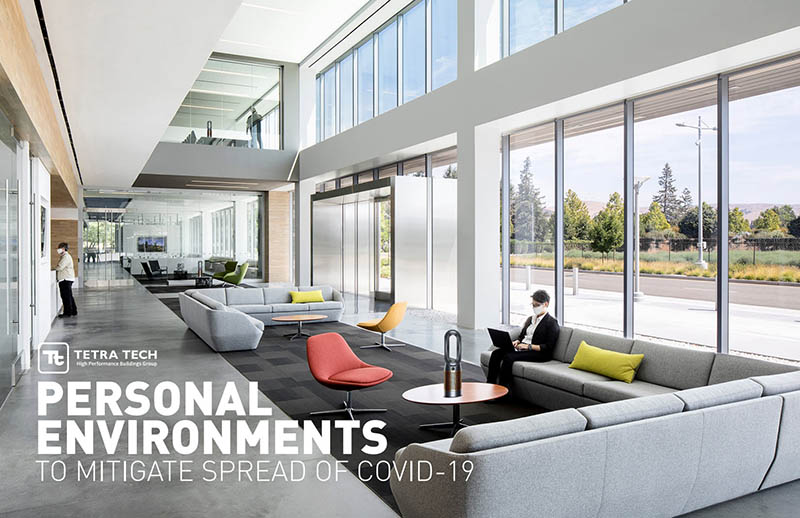As part of our work with Tetra Tech’s COVID-19 Task Force, we discussed with Dr. Willaim Bahnfleth, Chairman of the ASHRAE Epidemic Task Force, and Dr. Michael Kaiser, esteemed infectious disease expert, how personal environment style air purifiers can mitigate the spread of COVID-19 in the built environment, and create healthier spaces in the future.
Air filtration units are movable and offer a level of visual comfort to occupants. There are a variety of different personal environment systems capable of providing an enhanced level of safety and comfort in the built environment, including:
- HEPA filter units
- HEPA and carbon filter units
- HEPA and ultraviolet (UV) lighting units
- HEPA and titanium plate units
- HEPA, UV-C lighting, and bipolar ionization units
All of the above and combinations exist and are readily available in the marketplace. If the objective is infection control, our recommendation is the simplest units with a fan and HEPA filter only. These devices are efficient, cost-effective, and can capture 99.9 percent of the particles circulated. Strategically placed, these units can have a major impact on the health level of the individuals who occupy a space.
We’ve asked our expert about effectiveness and types of personal environments our clients should use. What follows is his response.
Is the reduction of particulates of a certain size in the air effective in mitigating spread?
Dr. William Bahnfleth: For SARS CoV-2, viral RNA has been found in very small particles that can easily be aerosolized. In some of his influenza research, Dr. Donald Milton, from the University of Maryland, found 90 percent of the viruses were in particles smaller than 5 microns in diameter. These devices can help remove particles that small, and they are very efficient. If you’re using HEPA filters with the highest penetrating particle size of 0.3 microns, that should be very effective against these aerosol droplet nuclei that are starting out mostly between 0.5 and 5 microns and reducing in size by 50 to 80 percent depending on the relative humidity.
Consider infection control in health care facilities. The basis of infection control in the most sensitive spaces is recirculation through HEPA filters. I don’t think that’s something that needs proof at this point. So, the question is mainly whether there is enough flow through the air cleaner and how well cleaned air is distributed. Even smoke testing just to see where the air is going will give you some idea of whether they’re being effective from a qualitative point of view in collecting the air that’s in the space.


